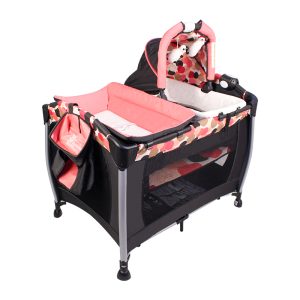A baby playpen is a popular item amongst parents, providing a secure and confined area for young children to play and explore. However, as with many baby items, there comes a time when a playpen is no longer necessary or suitable for a growing child. In this blog post, we will explore when a baby is too old for a playpen, highlighting the factors to consider when transitioning your child to alternative play spaces.
1. The period for using a baby playpen mainly depends on your age.
The age of your child is a significant factor in determining their eligibility for a playpen. While playpens are typically used for infants up to 2 years of age, this timeline can vary depending on various factors such as size, development, and activity level. Generally, as your child begins to crawl, walk, and explore more actively, the playpen can become too limiting, and it may be time to consider alternative play spaces.
2.When using a baby playpen, you also need to check the child’s physical development.
As your child grows, their physical development plays a critical role in determining when they may have outgrown a playpen. For instance, if your child is tall or has long limbs, they may feel too restricted in the playpen space. Additionally, if your child has progressed to climbing over the rails or out of the playpen, it can be a sign that it’s time to consider other play options.
3. The period when using a baby playpen also depends on the child’s play time needs.
As your child’s needs for exploration and playtime evolve, you may need to provide them with more open space to play. Playpens are designed to offer confined environments that are safe and secure for babies, but as your child begins to require more room to play, these spaces may become too limited. Providing alternative play spaces such as a playroom or outdoor play area helps to promote their development and independence.
4. When using a baby playpen, you also need to consider the child’s social interaction needs
As your child grows, they begin to require more opportunities for social interaction and play with others. A playpen can restrict socialization with other children, particularly if they are confined to a limited space and unable to join others in various activities. Providing your child with alternative play options outside the playpen creates opportunities for socialization and helps to foster their social development.
A baby playpen is a valuable item that offers a convenient way to provide a safe space for infants to play. However, as children grow and develop, it is essential to consider alternative play options that cater to their changing needs. By carefully considering factors such as age, physical development, playtime needs, and social interaction, parents can determine when their child has outgrown the playpen. As parents, it’s important to provide your children with the space and opportunities to explore and develop, and transitioning from a playpen to alternative play spaces is an important step to facilitate their growth and development.



